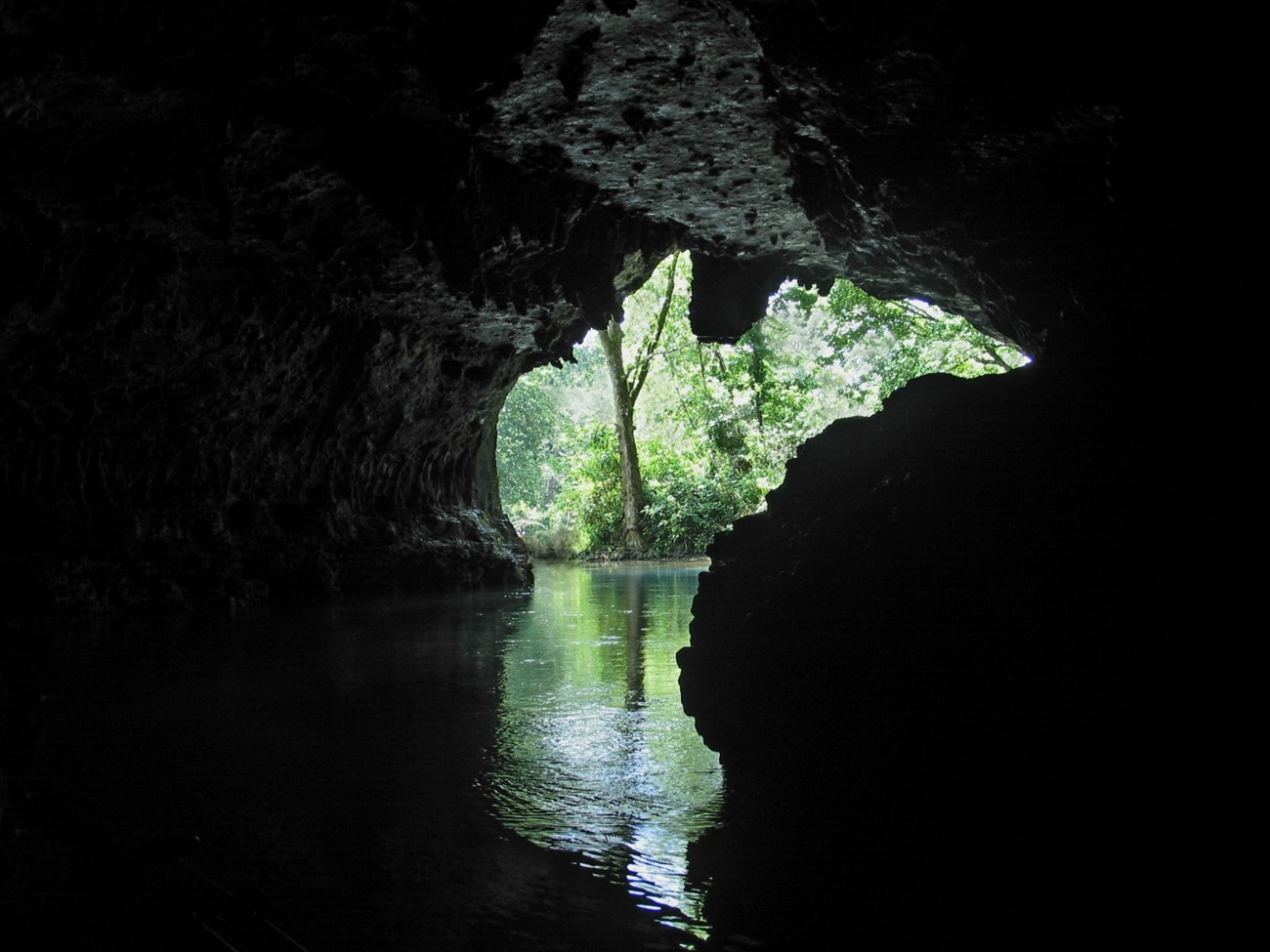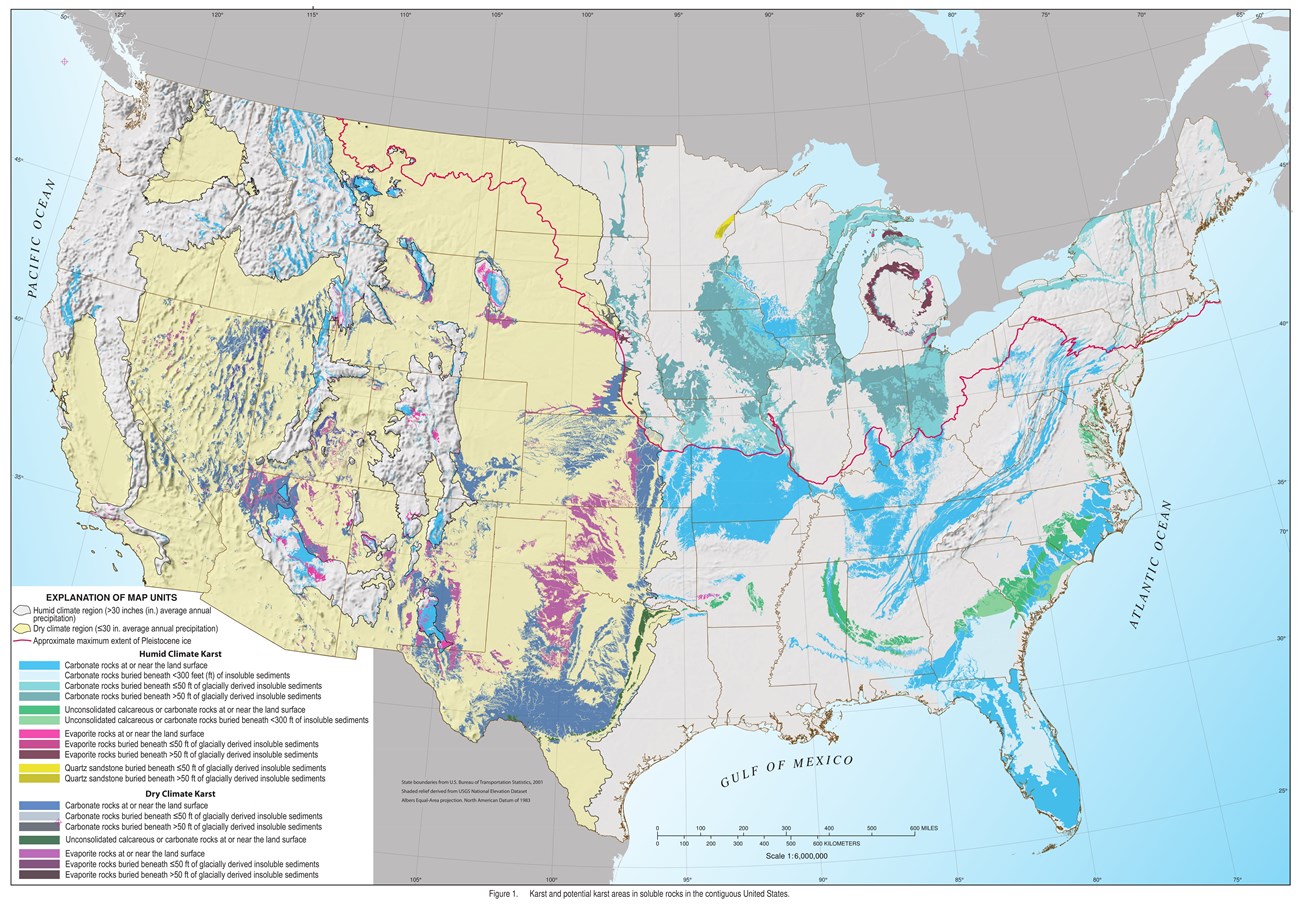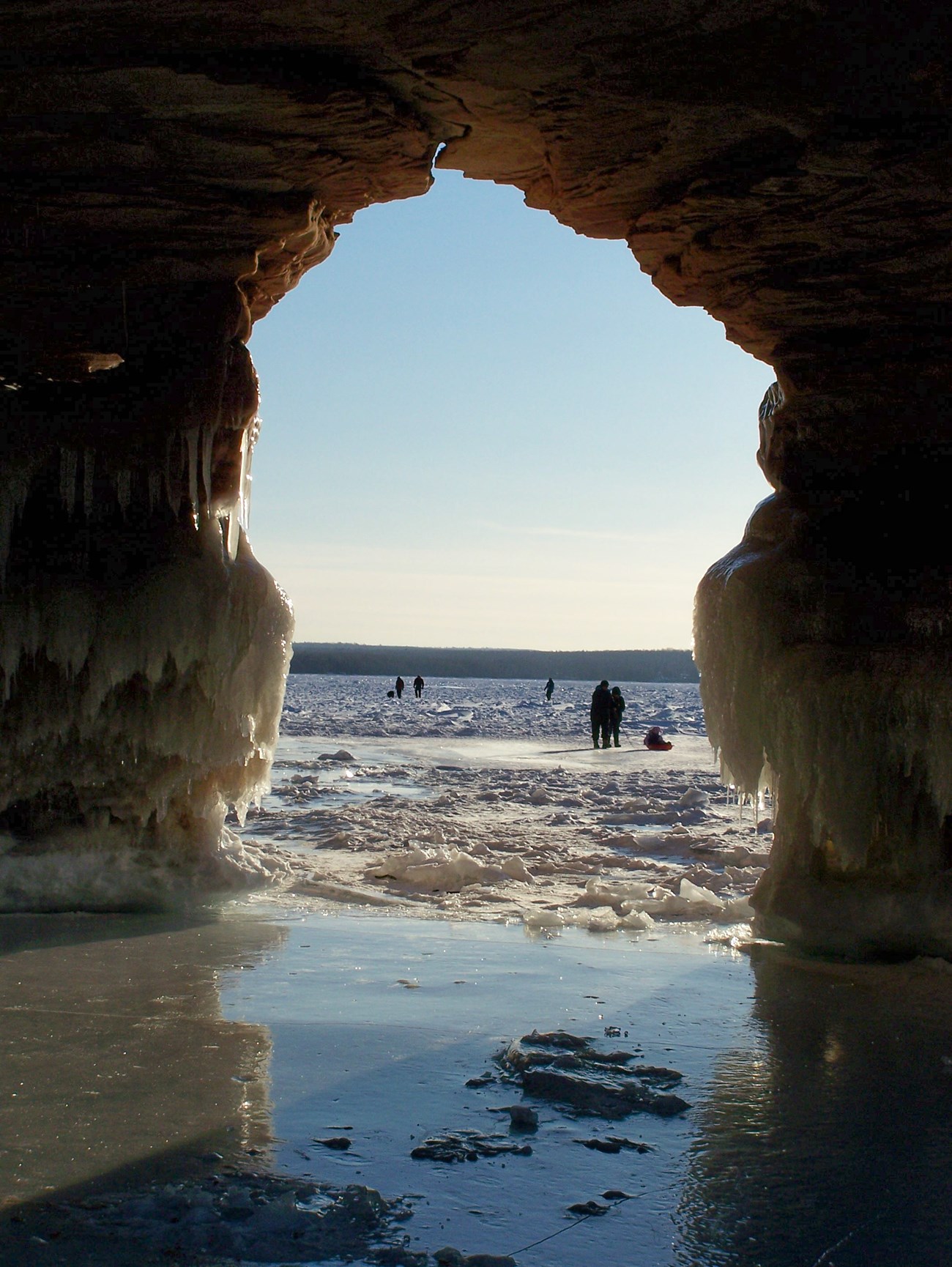Last updated: June 10, 2024
Article
Caves and Aquifers
You don’t have to take a journey to the center of the earth to learn more about the ground we walk on. Karst landscapes are one of the many natural wonders hiding beneath the earth’s surface.
In these places, the rocks are soluble and dissolve in the right conditions. Karst landscapes are usually formed in a type of rock called limestone but may include dolomite, gypsum, and other carbonate rocks. Karst landscapes often have caves, sinkholes, streams, and springs.
Caves and karst landscapes are diverse, fascinating, and rich in resources. Resources in caves and karst landscapes can include countless new, cave-adapted species, paleontological and archaeological discoveries, and amazing recreation opportunities! There are also lots of different types of caves, but the most common type are called solution caves.
NPS Photo by Dale Pate | El Malpais National Monument
How do solution caves form?
As rain falls through the atmosphere and soil, it picks up small amounts of carbon dioxide. This makes the water slightly acidic by the time it hits the bedrock. Don’t worry though! This isn’t acid rain, just normal rain water.
However, because karst landscapes form in soluble rocks, the water will dissolve the rock along fractures, faults, and layers in the rock. Both chemical and physical erosion work together over thousands of years. Over that time, tiny holes, gaps, and cracks in the rock will widen to form solution caves.
Once caves form, the mineral rich water can deposit material along the floor, ceiling, and walls of the cave. This process creates beautiful cave formations like stalagmites, stalactites, speleothems, and other rock sculptures one drop at a time over thousands of years.

NPS Photo by Scott House | Ozark National Scenic Riverways
How do aquifers form?
When rain falls from the sky and hits the ground, it has lots of different paths it can take. While much of the water will flow into streams and lakes or be used by plants and animals, another option is the water slowly following gravity and seeping into an aquifer.
Think of a sponge. In a sponge, there’s tons of little holes that soak up water. This is called porosity, and the porosity of karst formations make them a sort of underground sponge for our groundwater. Even though they only cover about 20% of the U.S., karst landscapes hold 40% of U.S. groundwater. That makes the study of caves and karst super important, since karstic springs provide drinking water to millions of people.
Karst landscapes are also very vulnerable to groundwater contamination because water soaks into them very quickly. Usually groundwater goes through a natural filtration process while slowly soaking into the ground, but in karst landscapes the water doesn’t have time to filter out any pollutants before entering the system.
The National Park Service collaborated with the National Cave and Karst Research Institute to update the National Karst Map, shown below.

USGS and the National Cave and Karst Research Institute
Where can karst landscapes be found?
The National Park Service manages more than 150 areas that have caves or karst landscapes. This includes over 4,900 caves! In fact, four of the seven longest caves in the world are located in our national parks. You can find them at Mammoth Cave National Park, Jewel Cave National Park, Wind Cave National Park, and Carlsbad Caverns National Park.
Some of the national parks with caves and karst include:
- Carlsbad Caverns National Park, New Mexico
- El Malpais National Monument, New Mexico
- Everglades National Park, Florida
- Great Basin National Park, Nevada
- Hawaii Volcanoes National Park, Hawaii
- Jewel Cave National Monument, South Dakota
- Lava Beds National Monument, California
- Mammoth Cave National Park, Kentucky
- Pinnacles National Monument, California
- Timpanogos Cave National Monument, Utah
- Wind Cave National Park, South Dakota
Interested in caves and karst? Become a Junior Cave Scientist or join us on a virtual tour video to explore caves today!

NPS Photo by Neil Howk | Apostle Islands National Lakeshore
